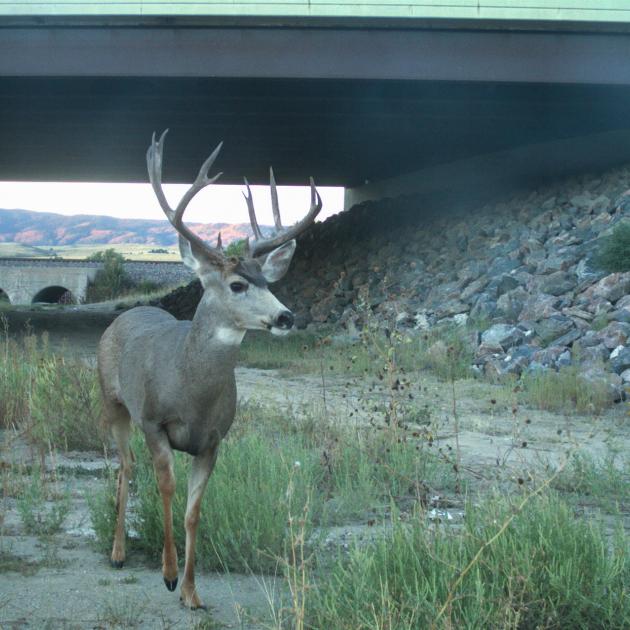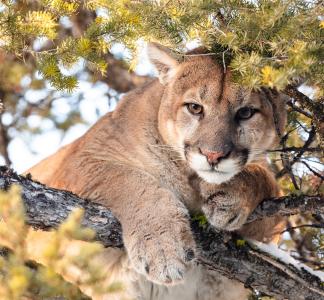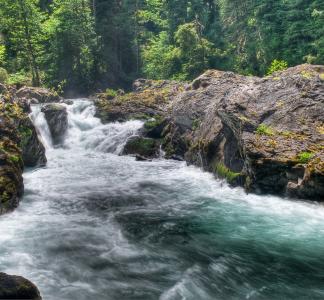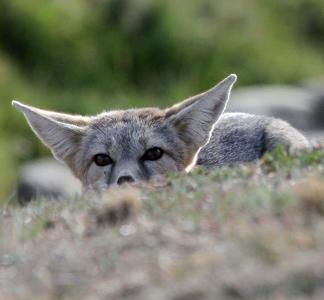How road crossings help wildlife survive a climate change-warped new reality
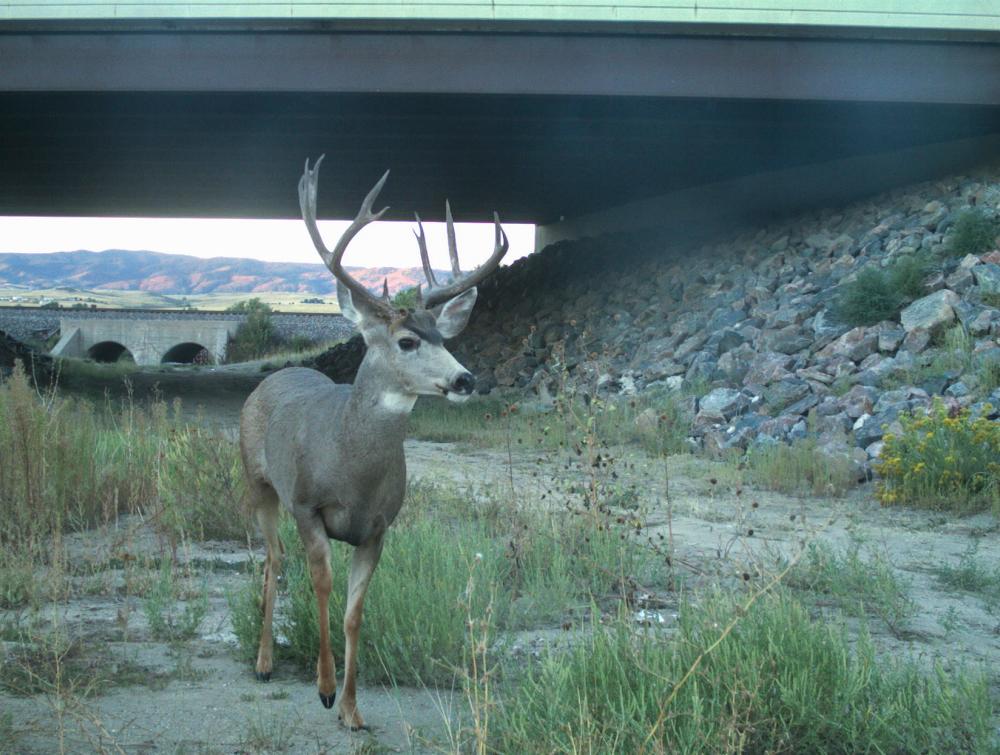
Mule deer emerging from wildlife underpass crossing U.S. Highway 85 in Colorado
Courtesy of Colorado Dept. of Transportation, Flickr
Policy shifts reflect importance of overpasses, other structures
Why does the black bear cross the road? It depends.
Sometimes it’s because she has to herd cubs from point A to point B, as in the case of one harried mama in Connecticut in 2021. Sometimes it’s to bring a big salmon dinner home, as was caught on video a couple months ago in Alaska. And sometimes no goal can be discerned by our simple human brains beyond getting to the other side.
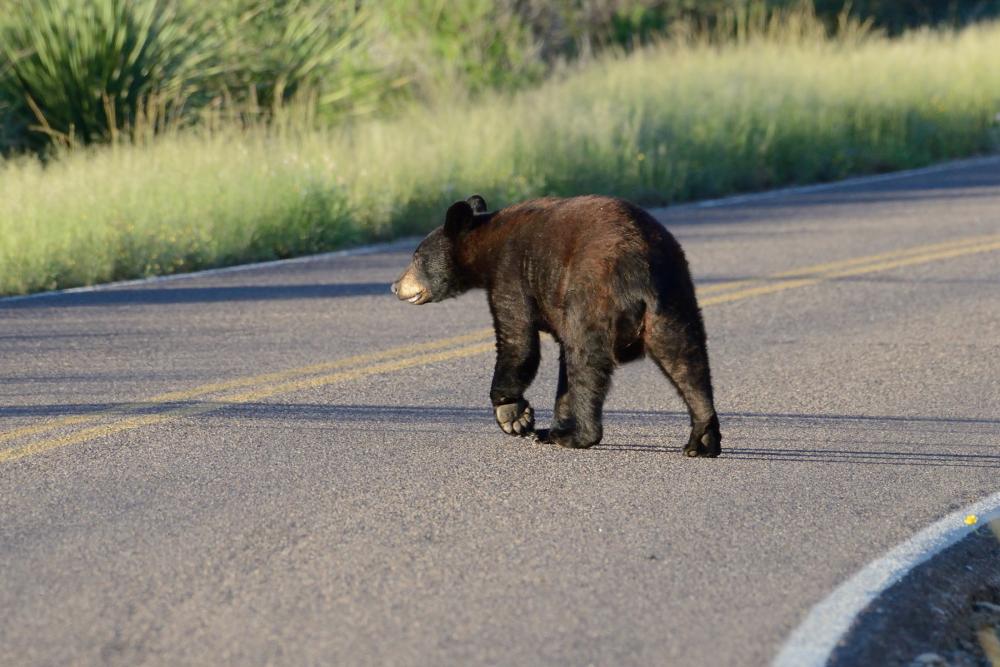
Black bear crossing roadway in Big Bend National Park, Texas
JanetandPhil, Flickr
Whatever punchline you prefer, this much is no joke: Black bears and other wildlife are routinely forced to navigate the grid of roadways, fences, walls and other obstacles we've plopped down atop their habitat and migration corridors over the last couple hundred years.
A lot of the time, it doesn’t work out. Annually, there are estimated to be more than 1 million instances of vehicles crashing into large mammals (a study focusing on California alone found more than 557 black bears killed during one five-year period). The Department of Transportation has previously found that 21 threatened or endangered animals, including the Canada lynx and Florida panther, face road mortality as a “major threat” to their survival. It’s quite dangerous for the people behind the wheel, too.
Roads may thwart animals’ pursuit of food and shelter, or even lead to an inbred population in the long run.
Of course, while tragic, these traffic fatalities are only an acute manifestation of a much larger problem (black bears actually do their best to steer clear of cars and trucks—research suggests they're well aware of the dangers of crossing roads, and try to pick less-busy areas with lower speed limits). Even when no collision happens, roads and other human-made obstacles threaten wildlife at the population (and potentially even species) level. For one thing, roads may also thwart their pursuit of shelter, food and water.
Another issue: animals that find their path blocked by a highway or tall fence might not be able to reach others of their kind. If they can’t do that, their mating options will be limited, resulting in a less diverse mix of genes and, over time, an inbred population. Scientists have already found that mountain lions in Southern California are becoming inbred because of lack of genetic diversity. The primary culprit: roads and highways.
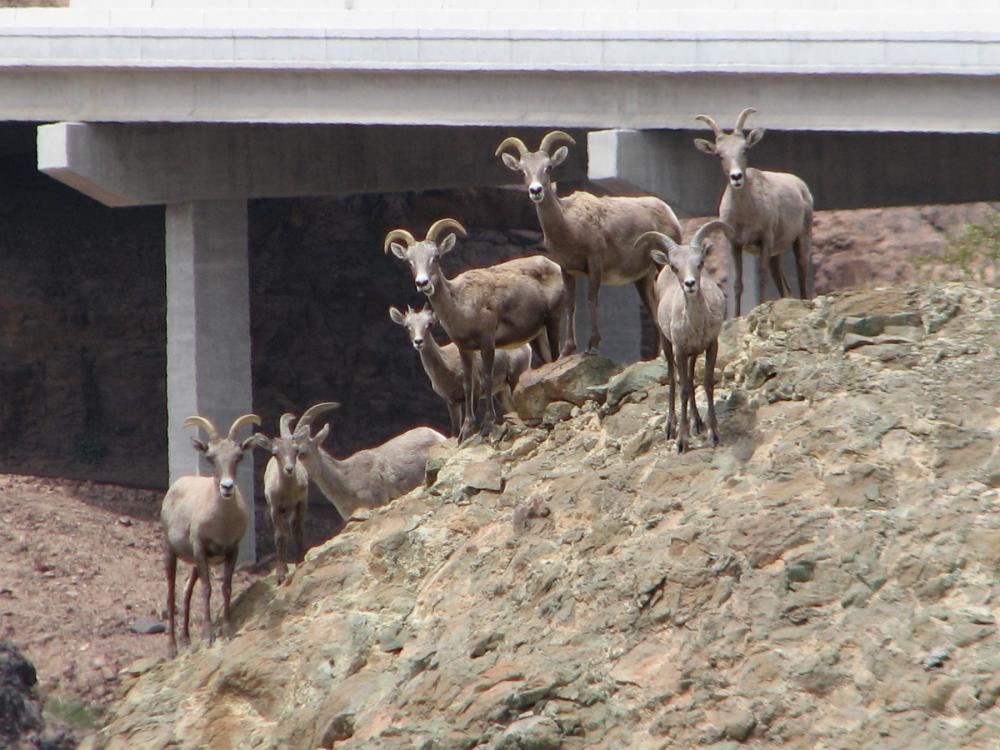
Bighorn sheep near an overpass on U.S. Highway 93 in Arizona
Arizona Dept. of Transportation, Flickr
As climate change warps once-familiar habitat and forces populations of animals and plants to move elsewhere much faster than evolution would ordinarily dictate, roads are due to become a bigger and bigger problem. This is especially true for species—like black bears—that reproduce infrequently and require a lot of space to roam.
When it comes time for wildlife to move pole-ward or to higher elevation in years ahead, many of the most vulnerable species will find the old idiom is true: you can’t get there from here. With habitat dwindling by the day and rising temperatures rapidly shrinking many creatures’ evolutionary margin of error, it falls on the humans responsible for these barriers to help create solutions that bypass them.
Overpasses and other wildlife crossings a key tool
To ensure animals and plants can get where they need to go amid the climate and nature-loss crises, the single most important thing we can do is conserve an interconnected network of lands and waters, building on the U.S.’ system of protected public lands.
But other tactics will be important too. Among them: building wildlife under- and overpasses and other structures. Research shows that such bridges and tunnels do help wildlife cross roads safely (this has been demonstrated for black bears, specifically). They probably help animal populations avoid becoming genetically isolated, too. As you might expect, these structures also keep people safer by reducing the likelihood of crashes.
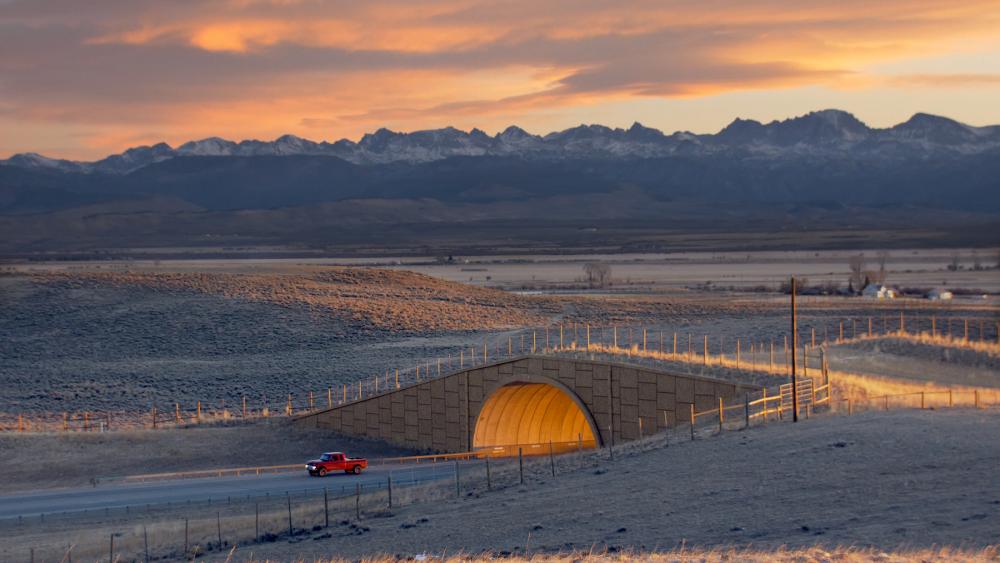
Wildlife overpass crossing U.S. Highway 191 in Wyoming
Leon Schatz and Gregory Nickerson, Wyoming Migration Initiative, Flickr
There’s a great chance you’ve seen examples of these wildlife crossings, which are an increasingly popular conservation and safety tool. Wildlife overpasses tend to resemble traditional traffic overpasses but topped with a strip of more-or-less wild-looking terrain. Underpasses, which are generally used by smaller animals, dip underneath roadways, often unnoticed by drivers (see the photo of the mule deer at the top of this page).
In Trappers Point, Wyo., sits a complex of over- and underpasses that some cite as the beginning of this larger trend. There, herds of migrating pronghorn antelope and deer cross U.S. Highway 191 by the thousands each winter and summer. The numbers alone attest to its success—among them, an 80-percent reduction in wildlife-vehicle crashes and a 300-percent increase in pronghorns crossing the road at the intended area.
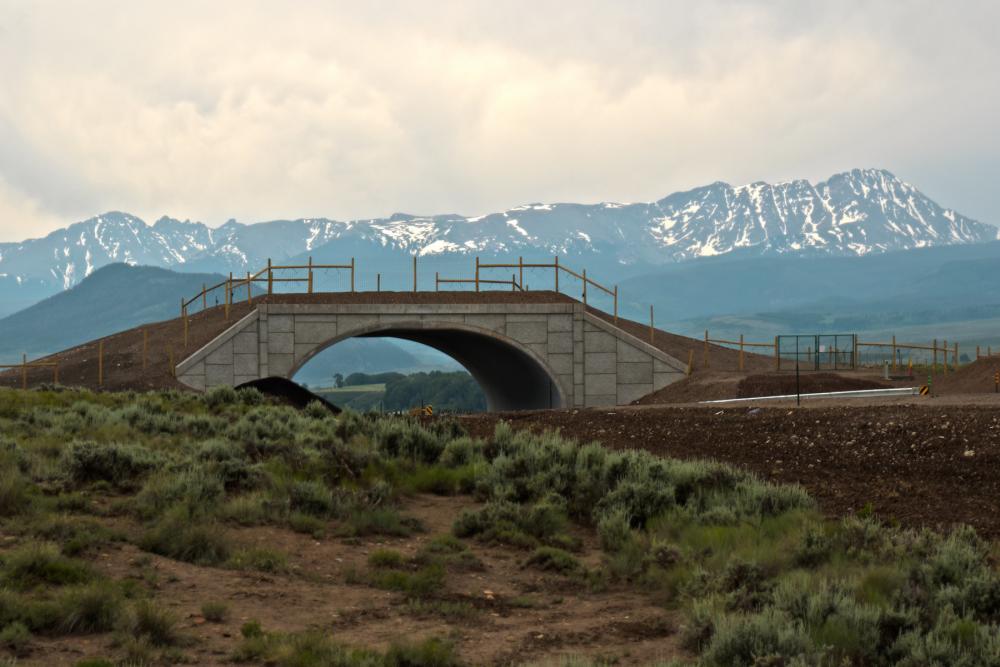
Wildlife overpass crossing State Highway 9 in Colorado
Courtesy of Colorado Dept. of Transportation, Flickr
Other major projects are underway. Among them are a paired overpass and underpass traversing U.S. Highway 160 in Colorado. Nearing completion in 2022, these were designed using data from the Southern Ute Indian Tribe and will help big game like deer and elk move travel safely across the highway when they head south for the winter. Local officials have estimated the project will reduce animal-vehicle crashes by 90 percent.
Another heavily anticipated overpass, slated to cross a section of U.S. Highway 101 near Los Angeles, broke ground this year. Projected to be the world’s largest wildlife crossing, it is hoped the bridge will help the previously mentioned mountain lions “stave off extinction.”
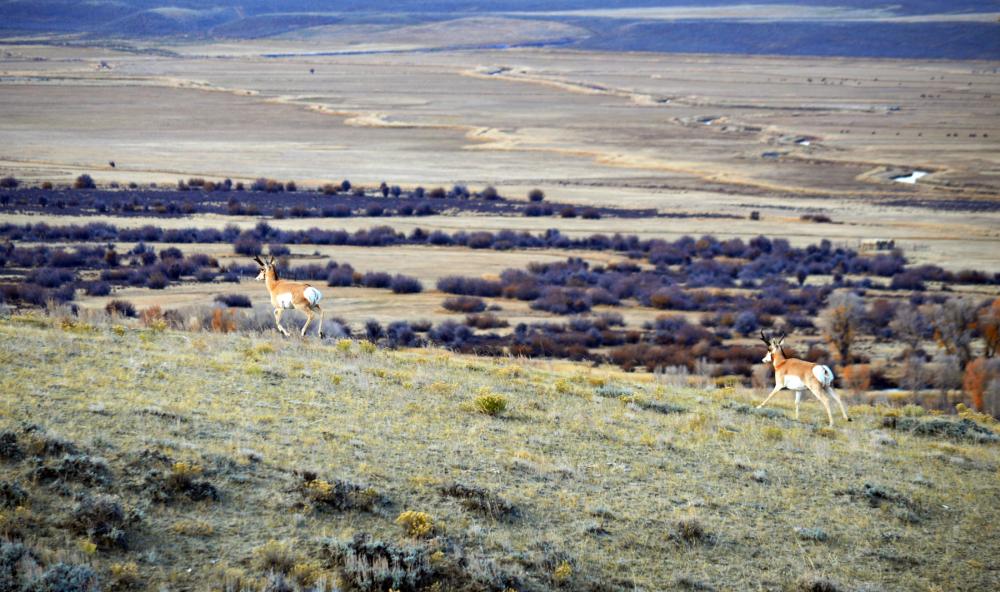
Pronghorn antelope immediately after crossing a wildlife overpass in Wyoming
Theo Stein, USFWS, Flickr
Across the West, state legislatures have authorized millions of dollars to fund similar projects. This spring, weeks after a moose and her yearling were seriously hurt in a crash near Steamboat Springs, Colo., and had to be euthanized, the Colorado General Assembly passed a measure to fund wildlife road-crossing projects across the state. Sometimes included in larger infrastructure overhauls, these appropriations, along with other efforts to protect wildlife corridors, have proven popular.
There have been big steps nationally, too. In 2021, the bipartisan infrastructure package that passed Congress included $350 million for wildlife crossings and related projects, the biggest investment ever made in such work.
To be sure, we still have a lot of work to do. Federal agencies can and must prioritize a national wildlife corridor system that incorporates nationally protected public lands and includes working with state and local governments to fund, build, and repair wildlife crossings, overpasses and underpasses.
The climate and extinction crises are marching forward every day. As efforts to connect and conserve habitat and migration corridors continue, it is clear the burgeoning wildlife crossing movement will be a key component. This will benefit black bears, mule deer, pronghorn antelope—and the people who live among them.
